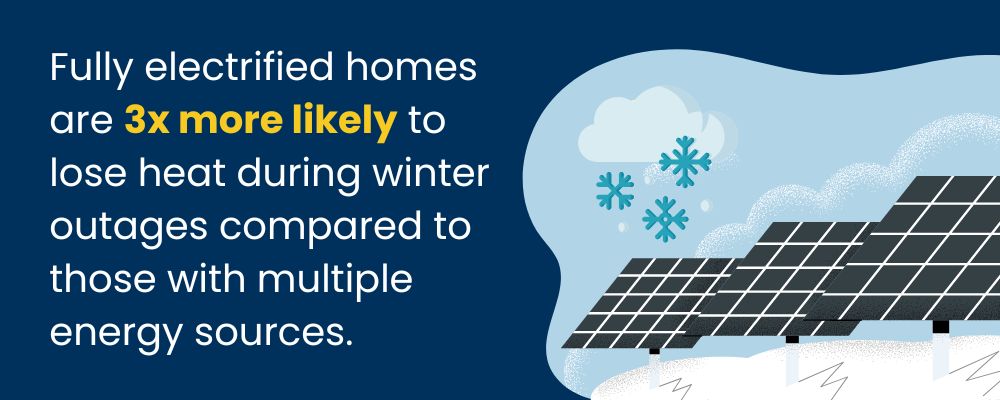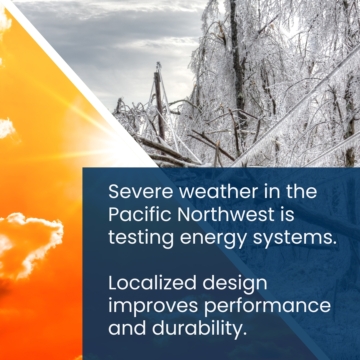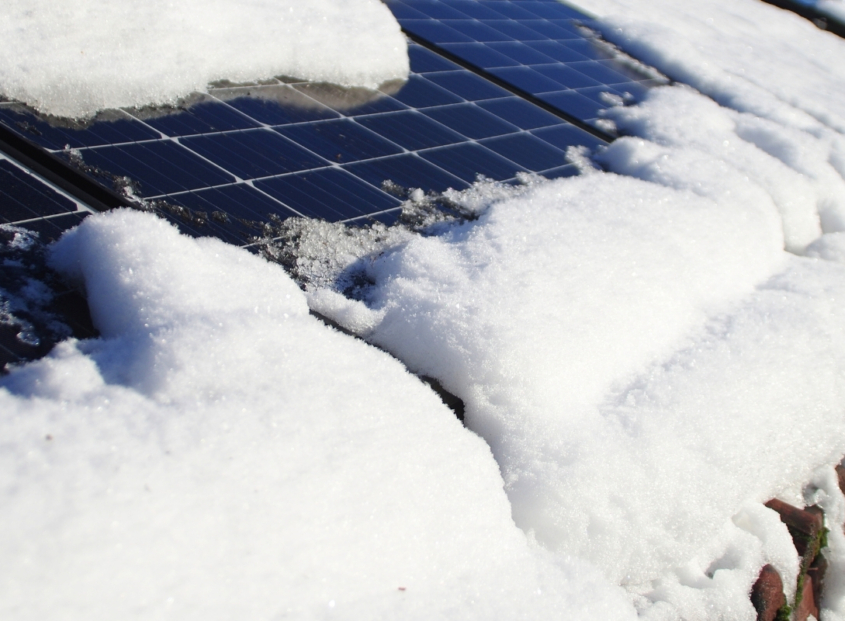Can Solar-Powered & All-Electric Homes Stand Up to Severe Weather?
As more homeowners switch to solar energy and electrification, a big question is coming up: are these systems ready to handle extreme weather? According to an article in Electrical Contractor Magazine, over a quarter of U.S. homes are already fully electrified and solar installations are expected to triple in the next five years. This means it’s more important than ever to understand how these homes hold up during power outages, winter storms, and heat waves.
For electricians and contractors, knowing how fully electrified and solar-powered homes perform helps ensure installations are reliable and customers get the support they need as their energy systems evolve.
3 Ways Weather Affects Electric & Solar Homes
Fully electrified and solar-powered homes are designed for energy efficiency and environmental performance. However, their reliance on a consistent electrical supply makes them sensitive to specific weather disruptions. Fully electrified homes are three times more likely to be vulnerable during winter power outages than those with other energy sources.
As climate patterns shift and extreme events become more frequent, it’s essential to understand how different conditions can influence system performance and household comfort.

1) Solar Production Challenges
Solar panels work most efficiently when they have clear skies and steady sunlight, but extreme weather can significantly impact performance:
- Heavy snowstorms can cover panels and reduce generation for extended periods
- Dense wildfire smoke blocks sunlight and limits energy production
- Prolonged overcast conditions dramatically decrease available energy for use or storage
- Increased energy demands during weather events strain already reduced solar output
While panels typically self-clear snow with sun exposure, extended low-light periods create energy shortfalls precisely when homes need power most for heating or cooling.
2) Peak Load Pressures
Extreme temperatures increase household energy consumption as HVAC systems work overtime to maintain comfort. Heat waves and cold snaps create significant challenges:
- Grid strain during peak usage can limit available power
- Undersized energy storage systems may struggle to meet increased demands
- Homeowners may need to adjust usage patterns to conserve stored energy
3) Physical System Vulnerabilities
While residential solar systems are built for durability, weather exposure remains a concern:
- Rooftop panels face potential damage from wind, ice, and debris
- Wiring and inverters require protection from environmental extremes
- Outdoor heat pump units need strategic placement and weatherproofing
- Proper installation techniques become critical for long-term resilience
Despite these challenges, thoughtfully designed electric and solar-powered homes can deliver exceptional comfort, control, and resilience during severe weather events.
Key Considerations for Electrification & Resilience
Electrification is a valuable strategy for achieving long-term energy goals, and with proper planning, these systems can provide reliable performance even under challenging conditions. Below are a few key elements to keep in mind when working with residential clients.
Solar & Backup Power Combos
Pairing rooftop solar with home energy storage systems creates a robust defense against outages caused by storms, wildfires, or grid failures. This innovative combination ensures power during emergencies and represents the promising future of solar energy resilience.
When the grid is down, batteries can power essentials like refrigeration, lighting, communication, and heating or cooling. This setup improves self-reliance and helps clients manage energy use more effectively during emergencies.
Heat Pumps for All Seasons
Electric heat pumps offer efficient heating and cooling in one system. Cold-climate models remain effective even in freezing temperatures. When powered by solar, they provide low-emission, reliable comfort year-round.
Integrating smart thermostats or energy management systems can enhance performance and reduce grid impact during peak demand.
Innovative Design for Pacific Northwest Conditions
Our region has seen increasingly severe weather events that impact energy systems. Tailoring these systems to local weather conditions increases both performance and durability. Consider:
- Weather-Resilient Design: Ensure rooftop solar panels are securely mounted and angled to promote snow shedding.
- Protective Placement: Install outdoor units in shielded areas that reduce wind exposure and prevent physical damage.
- Routine Maintenance Plans: Offer service packages that include seasonal inspections and preventive care to catch minor issues before they lead to failures
Building Toward a Resilient Future
For electricians and energy professionals, mastering weather-resilient design principles creates opportunities to deliver systems that meet environmental goals and provide genuine energy security when customers need it most.
Discover NECA–IBEW Local 48
Interested in joining a strong, supportive community of electrical professionals? Visit our dedicated membership pages for the Oregon-Columbia Chapter of NECA or IBEW Local 48 to learn more.
SIGN UP FOR OUR NEWSLETTER


